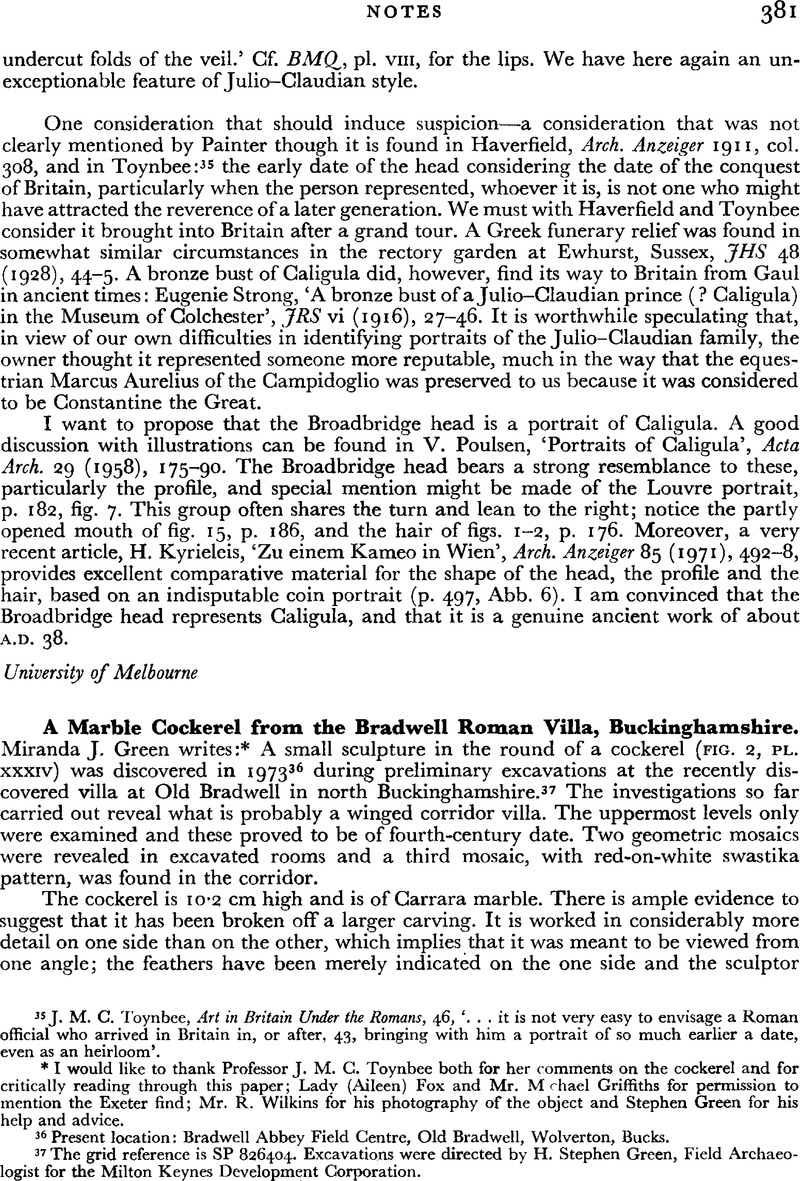Published online by Cambridge University Press: 09 November 2011

36 Present location: Bradwell Abbey Field Centre, Old Bradwell, Wolverton, Bucks.
37 The grid reference is SP 826404. Excavations were directed by H. Stephen Green, Field Archaeologist for the Milton Keynes Development Corporation.
38 J. M. G. Toynbee (1973), Animals in Roman Life and Art, 257.
39 Toynbee, J. M. C. (1962), Art in Roman Britain, cat. no. 69, pl. LXIII.Google Scholar
40 J. M. C. Toynbee (1964), Art in Britain Under the Romans, pl. XL a and b (Corinium Museum and Gloucester City Museum respectively).
41 Espérandieu no. 2132.
42 Espérandieu no. 2101.
43 Espérandieu no. 4584.
44 Espérandieu no. 4683.
45 Espérandieu no. 4696.
46 Lysons, S. (1797), An Account of the Roman Antiquities discovered at Woodchester in the County of Gloucester, pls. XXXVI–XXXX (British Museum).Google Scholar
47 British Museum (1922), Guide to the Antiquities of Roman Britain in the British Museum, 28, pls. II.
48 A lararium has been suggested at the Roman villa at Bignor (plans at Bignor Villa Museum, Sussex). S. E. Winbolt and G. Herbert (1934), The Roman Villa at Bignor.
49 A. L. F. Rivet (ed.) (1969), The Roman Villa in Britain, 154.
50 British Museum. A. L. F. Rivet (1969), loc. cit. (note 49), pl. 4.11.
51 Ibid., pl. 4.14.
52 Gloucester City Museum: JRS xlix (1959), 127, pl. XVIII, fig. 6.Google Scholar
53 Photograph in Current Archaeology No. 39 (July 1973: vol. 4, no. 4), 106.Google Scholar Information from Professor J. M. C. Toynbee, Lady (Aileen) Fox and Mr. Michael Griffiths.
54 Information from Professor J. M. C. Toynbee.
55 G. C. Boon (1957), Roman Silchester, pl. xv.
56 British Museum. Royal Commission on Historical Monuments (1928), Roman London, pl. LXVII.
57 JRS lviii (1968), 198Google Scholar, no. 136; pl. XVII, fig. 3.